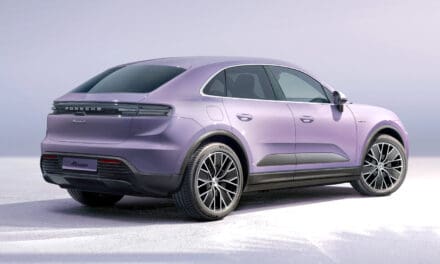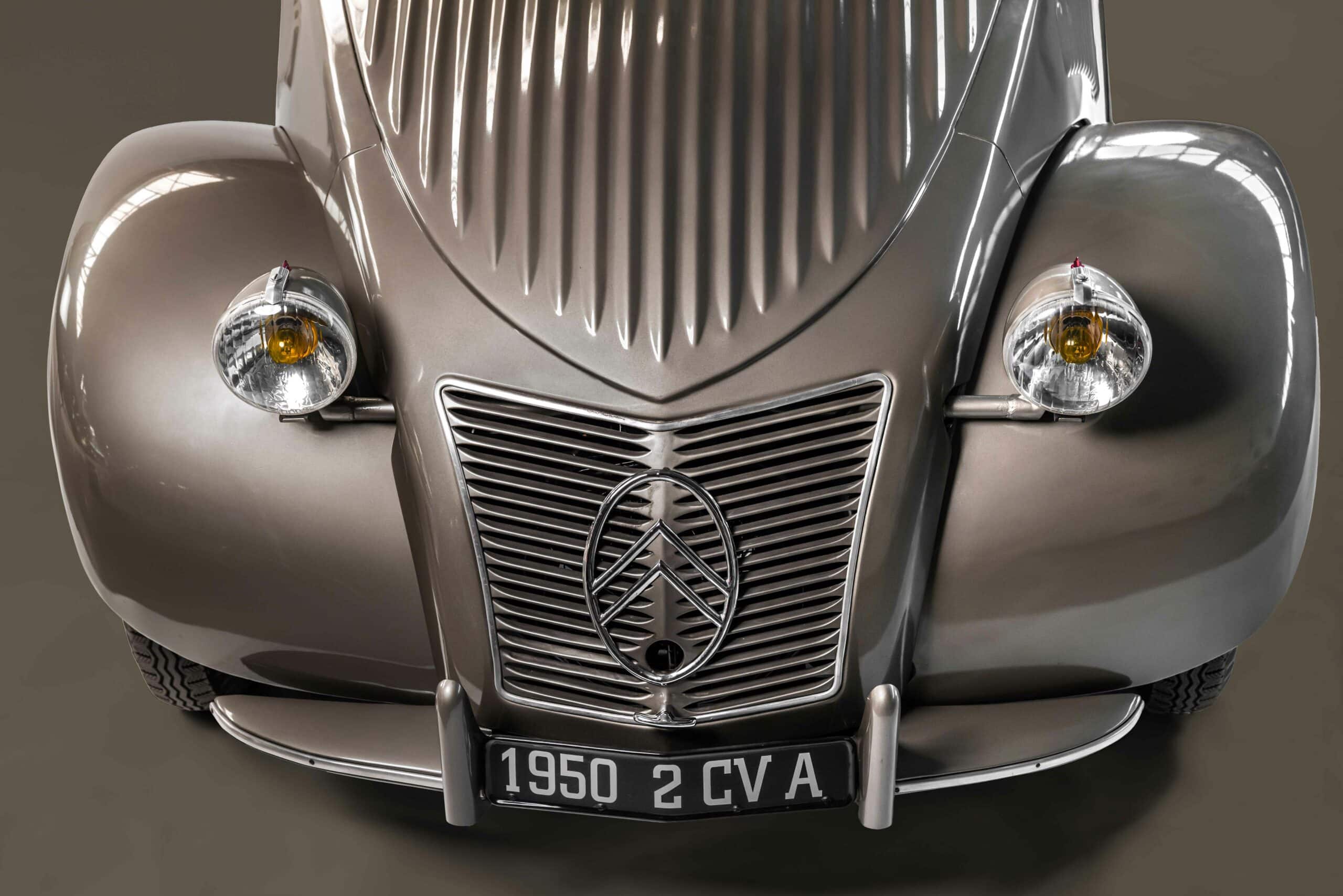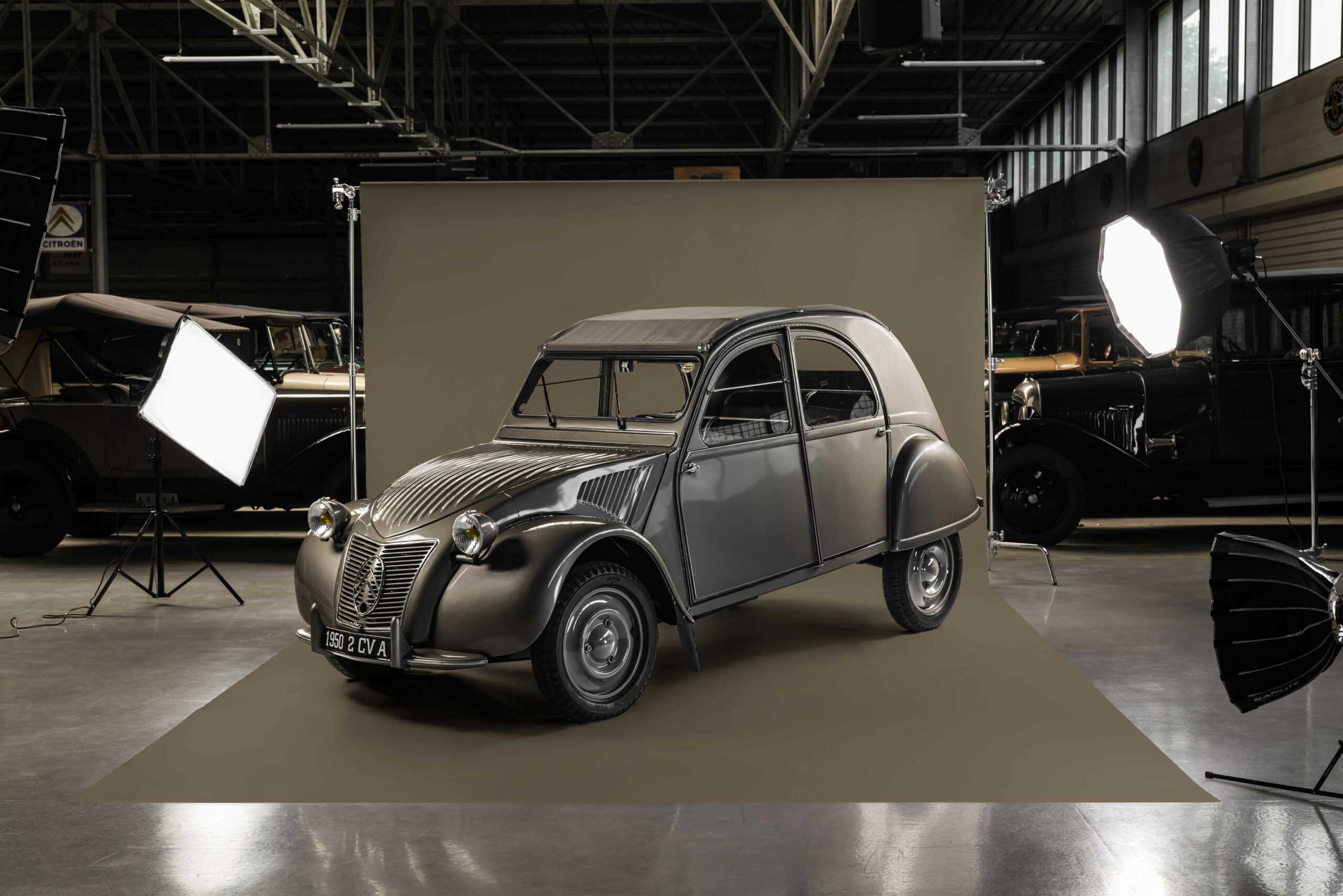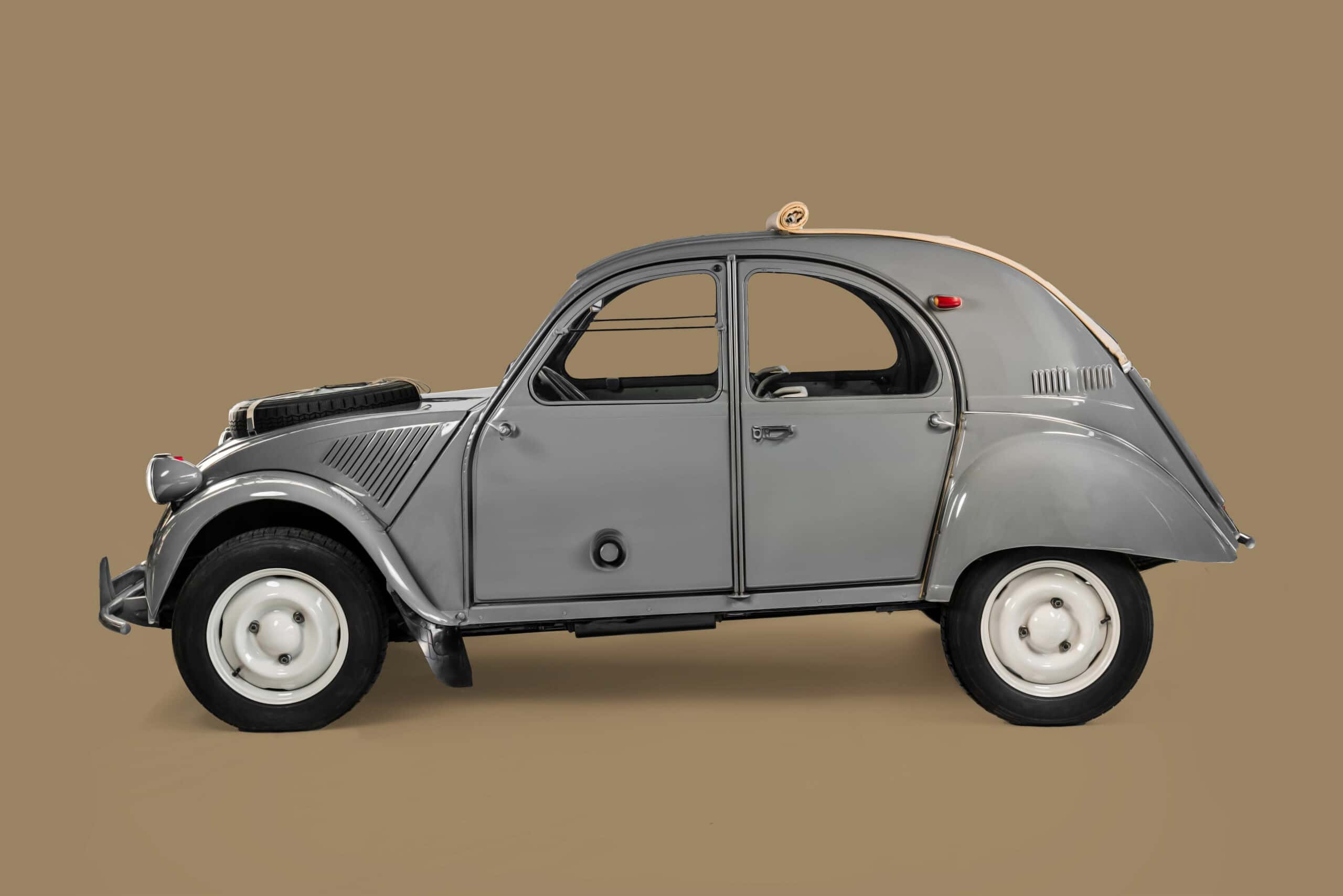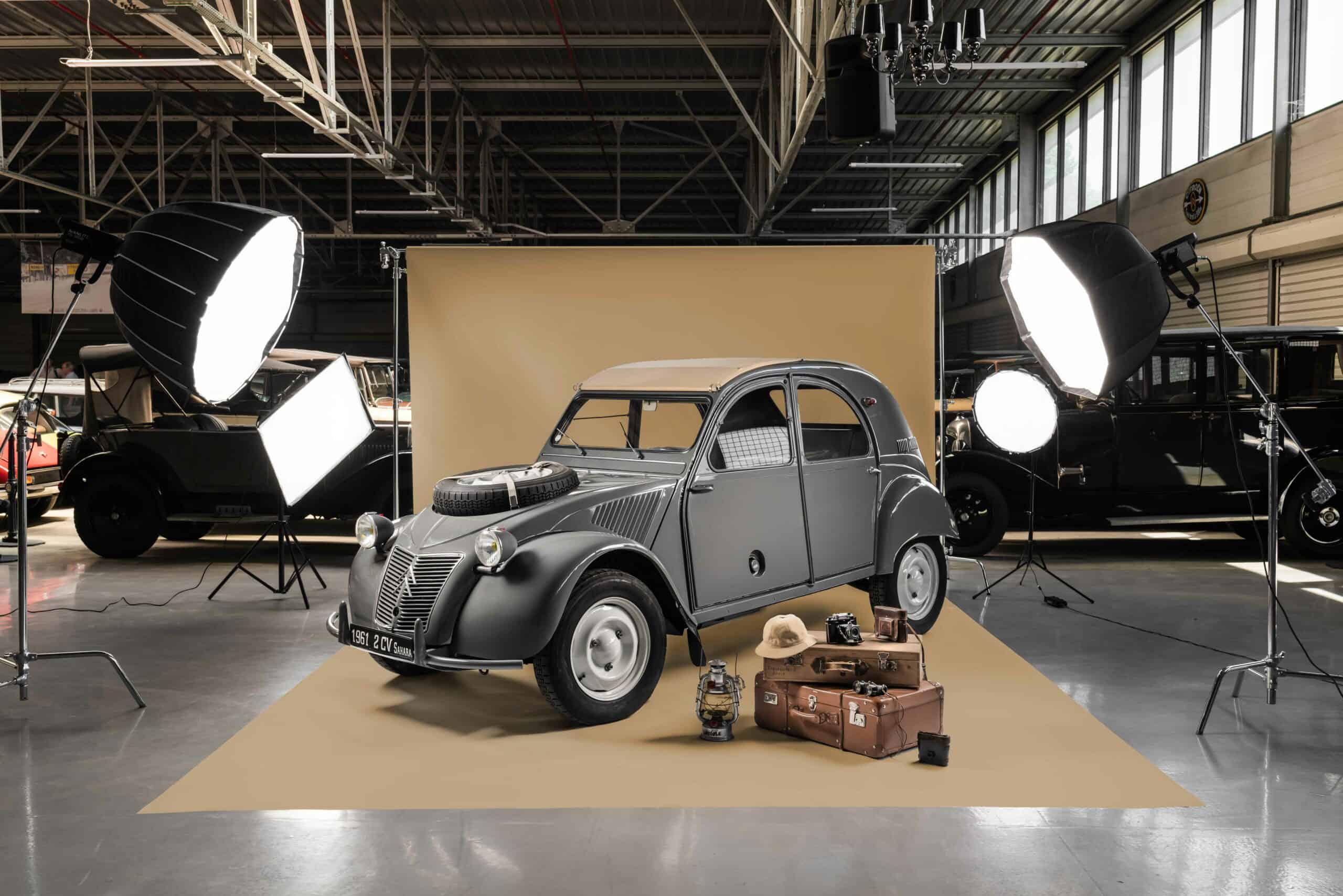
HISTORIC, ICONIC AND POPULAR: THE 2 CV CELEBRATES ITS 75TH BIRTHDAY.
HISTORIC, ICONIC AND POPULAR: THE 2 CV CELEBRATES ITS 75TH BIRTHDAY.
25th September 2023 – Citroën celebrates the 75th birthday of its most iconic model: the 2 CV. Designed at Citroën’s design office on Rue du Théâtre in Paris and fine-tuned at the La Ferté-Vidame test centre in the Eure-et-Loir region, it was unveiled to the public at the Paris Motor Show on 7 October 1948. The 2 CV enjoyed an exceptional career: a total of 5,114,969 units were produced, including 1,246,335 2 CV vans. The very last 2 CV left the Mangualde factory in Portugal 42 years after its launch at 4 PM on 27 July 1990.
The “TPV” (“Toute Petite Voiture or very small car) project was born in 1936. Its aim was to provide individuals with low income an economical, versatile car. In 1937, the first roadworthy prototype of the TPV project saw the light of day, weighing just 370 kg and with only one headlight (legislation at the time did not require two). The vehicle could carry up to four people and 50kg of luggage at a maximum speed of 50 km/h and was extremely comfortable. 250 pre-production models were due to be unveiled at the 1939 Paris Motor Show, though the outbreak of war put a hold to this. The models which had been built were therefore destroyed – all except four which were secretly kept at the Citroën Test Centre at La Ferté-Vidame.
When it went into production in July 1949, the 2 CV was a small car with a 9 bhp, 375 cc, air-cooled, flat-twin engine capable of a top speed of 50 km/h. Citroën had revolutionised the car industry with an economical and versatile vehicle. Its unique body shape and appeal quickly won over a large part of the population. But its huge success can also be attributed to its infinite range of uses, as well as its removable benches (as featured recently in the Citroën ‘Power of One’ Bord Bia Bloom show garden, June 2023), its lightness, agility and comfort. Not to mention the fact that it was ultra economical to run, making it the most popular car. By 1950, orders were flooding in, pushing delivery times up to 6 years. Its avant-garde spirit, with its ingenious technologies for the time, ensured that it remained part of the motoring scene for many years. The 2 CV is a timeless model that has become a veritable social phenomenon, attracting collectors from all over the world. And it is still frequently seen on our roads.
In total, there were ten special editions of the 2 CV, launched in France and a number of other European countries. They included the Spot, the Charleston and the Cocorico. The 2 CV also underwent a number of changes, including the launch of the 2 CV van (known as the 2 CV AU) in 1951, and then the 2 CV AZ in 1954, equipped with a 12 bhp engine and the famous centrifugal clutch. What’s more, the 2 CV got to drive on roads the world over thanks to various trips – such as the 16,500 km Paris-Kaboul-Paris trip in 1970, the 13,500 km Paris-Persépolis trip in 1971 and the 8,000 km Africa trip from Abidjan to Tunis in 1973, all three organised by Citroën. The 2 CV is also known around the world in many ways, and its reputation earned it a number of nicknames. Some of the best known are “Deuche”, “Deudeuche” and “Ugly Duckling”, to name but a few. This wide variety of nicknames shows just how popular this historic and iconic model was.
The spirit of the 2 CV lives on today in the iconic Citroën Ami, another “Toute Petite Voiture” project led by Citroën, 87 years after the first. A very different vehicle, but one with the same aim of making cars versatile, economical, and accessible.





